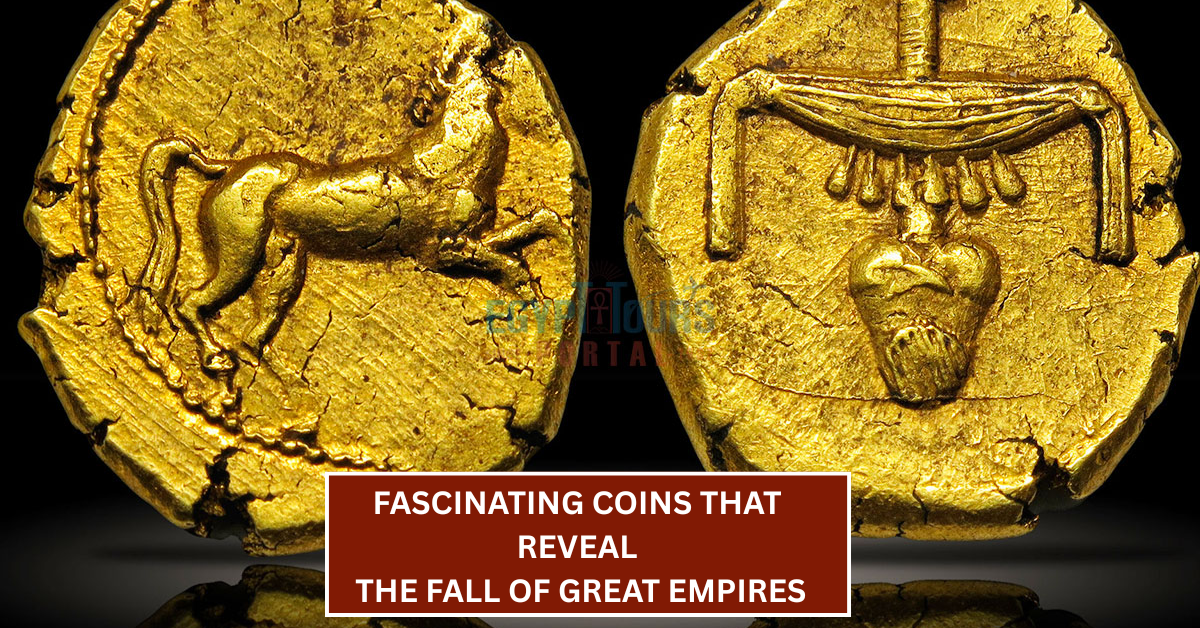Coins are more than just money; they are tiny time machines that tell stories of the past. Especially when it comes to empires that once ruled vast lands, the coins they left behind reveal a lot about their rise and decline. This article explores 10 remarkable coins from the Roman, Byzantine, Ottoman, and Tsarist empires, minted during times of collapse, that show how economies struggled and societies changed.
For young readers and history lovers alike, these coins offer a unique glimpse into how the fall of mighty empires was connected to economic problems. By understanding these coins, we learn not only about money but also about leadership, war, and the struggles of everyday people living through turbulent times. Let’s dive into these fascinating pieces of history that have survived for centuries.
1. Roman Denarius from the Late Empire
This Article Includes
- 1 1. Roman Denarius from the Late Empire
- 2 2. Byzantine Follis During the 11th Century Crisis
- 3 3. Ottoman Akçe in the 17th Century
- 4 4. Tsarist Russian Kopek Before the 1917 Revolution
- 5 5. Roman Imperial Post-Diocletian Coins
- 6 6. Byzantine Hyperpyron of the Fourth Crusade Period
- 7 7. Ottoman Mahmud II’s Reforms Coins
- 8 8. Tsarist Silver Rouble during the Russo-Japanese War
- 9 9. Late Roman Bronze Coins from the 5th Century
- 10 10. Ottoman Lira Coins of the Early 20th Century
- 11 Conclusion: What Coins Teach Us About Empire Falls
The Roman Denarius was once a silver coin widely used across the empire. However, during the later years of the Roman Empire, the coin’s silver content dropped sharply. This debasement reflected Rome’s economic struggles, including inflation and constant wars. By studying these coins, historians see how the empire tried to stretch its resources but ended up weakening its currency and economy.
2. Byzantine Follis During the 11th Century Crisis
The Byzantine Empire faced many challenges in the 11th century, and its follis coin shows this. Originally a large bronze coin, the follis became smaller and less valuable as the empire lost territory and wealth. This change in coinage mirrors the empire’s decline, highlighting the difficulties in maintaining control and economic stability.
3. Ottoman Akçe in the 17th Century
The Ottoman Empire’s silver Akçe once was the main coin in trade and daily transactions. But during the empire’s decline in the 1600s, the Akçe suffered heavy debasement and inflation. This caused serious economic troubles, making it harder for the Ottomans to fund armies and manage the empire effectively, which contributed to its weakening hold.
4. Tsarist Russian Kopek Before the 1917 Revolution
Before the fall of the Tsarist regime in Russia, the kopek coin was a common currency. As World War I strained Russia’s economy, inflation soared and coins became less valuable. The kopek minted in this period symbolizes the financial chaos and public dissatisfaction that ultimately led to the Russian Revolution and the end of the Tsarist empire.
5. Roman Imperial Post-Diocletian Coins
After Emperor Diocletian’s reforms, coins were redesigned to stabilize the economy. But with continuous invasions and internal problems, the new coins lost metal content over time. These coins reflect the struggles of the empire to keep its economy intact amid collapse and serve as witnesses to the final days of Roman rule.
6. Byzantine Hyperpyron of the Fourth Crusade Period
The hyperpyron was a gold coin during the Byzantine Empire’s final centuries. After the devastating Fourth Crusade in 1204, the coinage suffered as the empire fragmented. The hyperpyron coins from this era show attempts to preserve wealth, but they also highlight the empire’s reduced power and economic hardship during collapse.
7. Ottoman Mahmud II’s Reforms Coins
Mahmud II tried to save the crumbling Ottoman Empire in the early 19th century. He introduced new, better-quality coins to restore confidence in the currency. These coins are important because they represent reform efforts, but also reveal how difficult it was for the old empire to compete with rising European powers economically and politically.
8. Tsarist Silver Rouble during the Russo-Japanese War
The silver rouble minted during the early 1900s was under pressure as Russia faced defeats in the Russo-Japanese War. The coin’s fluctuating value indicates economic stress and losing battles. This period’s coins help us understand how military failures directly influenced the empire’s economy and sped up its decline.
9. Late Roman Bronze Coins from the 5th Century
By the 5th century, bronze coins in the Roman Empire became lighter and less valuable due to economic hardships. The Empire’s inability to maintain consistent coin quality shows its weakening control and financial crisis. These coins are among the last to represent the Roman Empire before the fall of the Western half in 476 AD.
10. Ottoman Lira Coins of the Early 20th Century
The Ottoman Empire’s gold Lira coins from the early 1900s reflect a period when the empire tried to modernize. However, war and economic problems led to inflation and currency devaluation. These coins become symbols of a powerful empire struggling to hold together in the face of unstoppable decline.
Conclusion: What Coins Teach Us About Empire Falls
The coins from these great empires reveal much more than just economic facts. They show us leadership choices, social struggles, and the effects of war on everyday life. For young readers interested in history, coins serve as fascinating clues to understand how powerful empires can fall when their economies fail.
Studying these ancient and historical coins helps us appreciate the delicate balance needed to keep a nation strong. Whether Roman, Byzantine, Ottoman, or Tsarist, each coin tells a story of change, struggle, and ultimate collapse. Next time you see an old coin, think of the long history it holds and the lessons it offers about the rise and fall of great powers.






